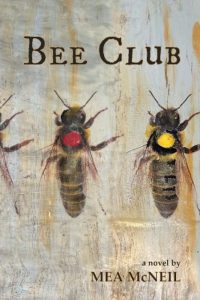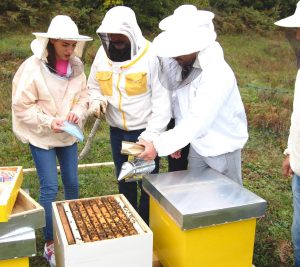An Epiphany
by Ed Colby
On my way to the Flat Tops on a hot August day, I choked as dust clouds rolled off the road. I had the windows down on my 1986 Toyota Tercel wagon, because of course the air conditioner didn’t work. Then for no apparent reason, I noticed a big dashboard button that read Econo AC. I thought, “I wonder what would happen if I pushed that button.” So I did.
When I turned on the fan, cool air gushed onto my legs. I rolled up the windows. My AC works perfectly. I’ve owned this car a half-dozen years, but when I get a wrong idea stuck in my head, sometimes I have to wait for an epiphany.
So can we talk about Varroa mites? Last spring I used Amitraz-based Apivar to knock down Varroa mites in some of my colonies and formic acid-based Mite Away Quick Strips (MAQS) in others.
When I went back and tested hives that had been treated with Apivar last spring, I couldn’t find a mite. As for the ones I treated with MAQS, I confess I never came back and checked. I can’t explain that oversight, but I do get busy sometimes. The hives that got a MAQS treatment were all in the same yard – the one that would give me trouble later.
In the summer, I have five bee yards — two at high altitude in the Colorado Flat Tops, two right here in the Colorado River valley, one up Garfield Creek across the river. By early August, mites were scarce at four of the yards. But one of the Colorado River valley apiaries had a Varroa problem.
It was also on a nice honey flow. I opted to treat for mites with MAQS, because you can use it with honey supers on. My main concern was that I might kill some queens, because this stuff can be touchy with queens. The temperature threshold for treatment is 50 – 85°F on the day of application. The directions go on to state that temperatures greater than 92° during the first three days of application can cause “excessive brood mortality and queen loss.”
The 30 hives were on pallets, four hives per pallet. One pallet had screened bottoms. I put in two strips per colony, per label directions, pulling the pollen traps out from under these hives, so as to assure adequate ventilation. This is a lot of work! Then I staggered the brood supers, with the upper overlapping the lower by an inch in the front and two in the back. The offsets differ because these supers have cleats nailed onto them at the top, front and rear, for ease of lifting. In order to overlap an inch in the front, you have to overlap two in the rear.
The weather forecast was 75° for August 19, the day of application, then 80, 85 and 85° for the days following. Actual temperatures ran somewhat higher, with two days topping 90. Naturally I was concerned when it got so hot, but when I started worrying out loud, both my mentor Paul and my gal Marilyn counseled me to not borrow trouble.
The treatment takes seven days. When I opened the hives on day 10, I found some brood damage, but 28 of 30 colonies had a laying queen. One had replacement queen cells and one was a drone layer. Excepting the brood damage, about what I’d expect to find in any 30-hive apiary in August. I breathed a sigh of relief. I did this queen checking on yet another hot day, so I was pretty beat when I got my pollen traps back under these colonies and the still un-harvested honey stacked back on top. Mite sampling would have to wait.
When I returned a few days later I got the bad news. A colony that had sugar-roll tested 10 mites per 300 bee sample in early August now tested 8. One that previously had 15 mites now had 22. One with five still had five. (This one was on a screened bottom board.) A previously untested colony tested at six Varroa. These are not acceptable levels of mite infestation. I guess I could have kept sampling, but I felt I’d seen enough.
I did the best I knew how. I gave my bees lots of ventilation, maybe too much. I treated with temperatures pushing the upper limit of acceptable. I’m not here to cast blame. And I’m not a scientist. I’m just a beekeeper. I was pretty sure all along that I was going to have a dramatic mite knockdown, with some queen loss. But the MAQS proved safe for queens and mites alike.
Ignore Varroa mites at your peril. They will eat your little darlings alive. You could choose to not test for them, or not treat for them, again, at your peril. By sacrificing some of your colonies to mites, you might select for survivor strains of bees that can cope with them. But please, do this with your eyes wide open.
Assume nothing. The only way to know is to check. Then, if you treat, test again. Because what worked last year, or what you read in a book or a magazine, or online, might not work for you this time.
Finally, if you’re dead sure your car’s air conditioner doesn’t work, turn it on and try it anyway. You might be surprised.









